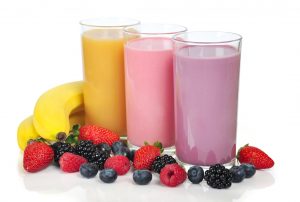 The plant-based beverage market escalated due to environmental and health orientated drivers. Hydrocolloids are used to improve the texture and stability of these emerging beverages. However, not all stabilizers are created equal nor hit all the critical success factors in making a high quality product.
The plant-based beverage market escalated due to environmental and health orientated drivers. Hydrocolloids are used to improve the texture and stability of these emerging beverages. However, not all stabilizers are created equal nor hit all the critical success factors in making a high quality product.
Author: Nesha Zalesny, Fiberstar Technical Sales Manager
(7/31/18)
Dairy Alternative Beverage Market
Various factors have fueled an explosion of growth in the non-dairy beverage market. One of the primary factors has been the significant amount of research around the environmental and health impact of consuming dairy products. This research increased the awareness of factory farming conditions as well as the environmental impact of raising beef and dairy cows. Another factor is the nutritional information generated without the dairy council’s heavy hand and deep pockets directing research. This research has highlighted some of the detriments of diets full of saturated fats. The combination of these findings has triggered a significant uptick in vegetarian and vegan lifestyles. These lifestyles not only address health issues, but also environmental concerns. Another segment steering clear of dairy are those affected with lactose intolerance and/or sensitivities and dairy protein allergies. According to the National Institute of Health, a whopping 65% of the population has a reduced ability to digest lactose.1
Pros and Cons of Stabilizers in Beverages
Up until recently, formulators used a mix of iota and kappa carrageenan in dairy and non-dairy milk products. Carrageenan, especially kappa, is more suitable for milk-based systems, but is also used in dairy alternatives. This ingredient offers good suspension and some emulsification properties with a relatively low impact on mouthfeel. This means that at 0.03-0.06% carrageenan use, the beverage should have a nice light mouthfeel with a stable suspension of larger protein or cocoa particles.
Unfortunately, social media and one food blogger managed to vilify carrageenan causing consumer demand to drop. This forced most major manufacturers to pull carrageenan out of their non-dairy milks to remain competitive. The good news is that food companies do proactively listen to consumer needs and act on them. However, this is at the expense of good science. Long-term consequences occur when removing carrageenan from products. First, the market allows media to dictate rather than the science community. Secondly, a disruption in the supply chain which starts with vulnerable farmers globally puts pressure on those who rely on this commerce to support their families and communities.
The market promoted high acyl gellan gum use in these systems since the mid-1990s. However, up until recently, high cost hindered gellan gum growth. High acyl gellan suspends large particles of protein or cocoa magnificently at about 0.03% use level. Gellan gum is the only stabilizer capable of suspension without a huge impact on the mouthfeel of the beverage similar to carrageenan.
Gellan gum does have some shortcomings in that it provides no emulsion capabilities (like iota carrageenan). It also contributes an extremely clean mouthfeel where consumers expect a bit of creaminess. Gum blenders worked around the lack of emulsification and mouthfeel by creating blends of gellan with locust bean gum or gum acacia. Drought conditions in the areas where locust bean gum and gum acacia thrive cause the pricing of these gums to be volatile. Currently, the market is experiencing an upswing in pricing. Another issue may be market perception of gellan gum. Gellan gum, a biogum, is regarded with some suspicion. At this time, the Whole Foods list contains gellan gum. For now, gellan gum is suitable for organic foods, but consumer awareness and tastes may drive change on its status.
A few manufacturers use other gums such as xanthan or guar gum or microcrystalline cellulose (MC) and carboxymethylcellulose (CMC) as mouthfeel modifiers. Xanthan gum is an excellent gum for suspension of particles, but concentrations are approximately 0.25% for suspension. At this use level, the mouthfeel would be more like a salad dressing than a refreshing light beverage. Guar gum has similar challenges. Generally, the MCC/CMC blends are not used as the sole stabilizer in non-dairy milks. They do tend to modify the mouthfeel of other gum blends. These stabilizers also have “chemical” sounding names like microcrystalline cellulose or carboxymethylcellulose. Historically, these ingredients helped stabilize and suspend particles in beverages and modify mouthfeel.
So what natural, functional ingredients are available now? Part 2 will highlight the benefit of using Citri-Fi®, a natural citrus fiber with excellent functional benefits in beverages.


